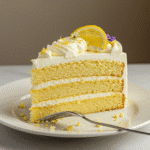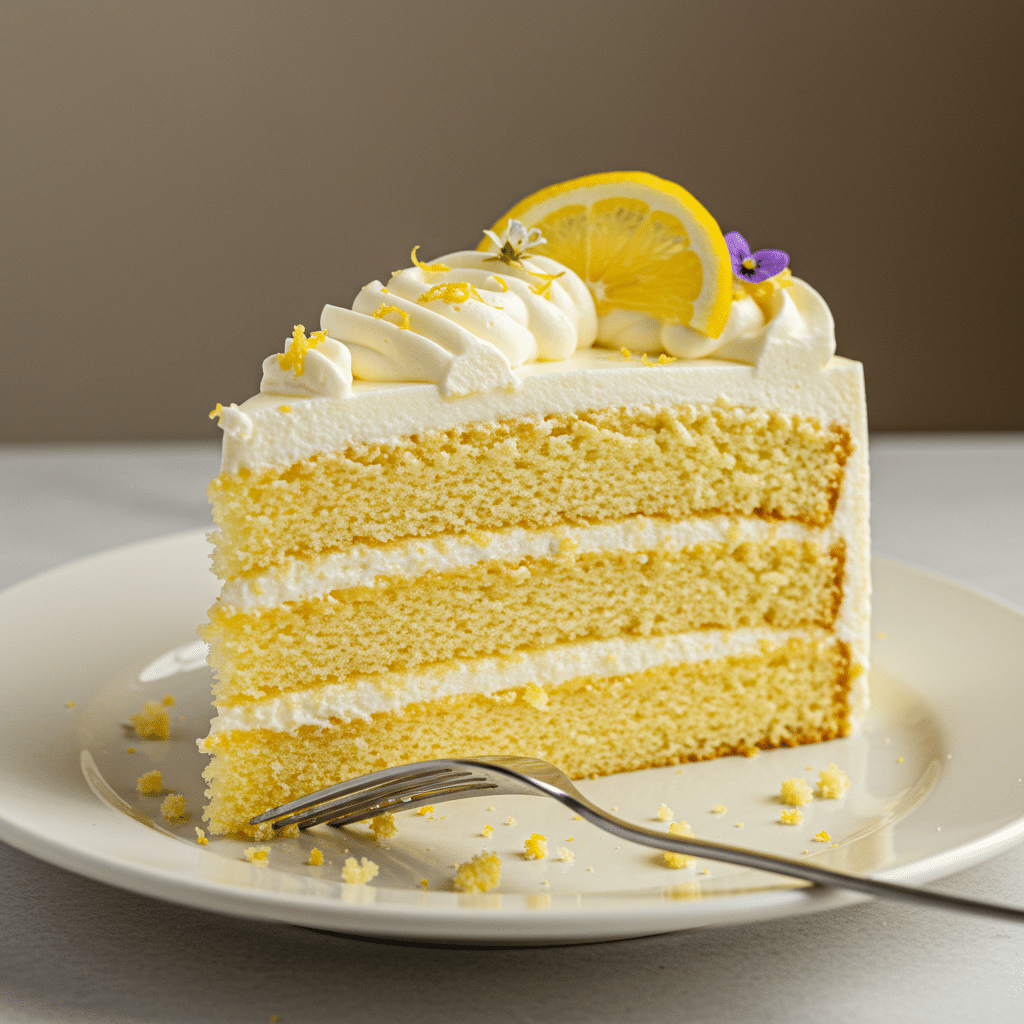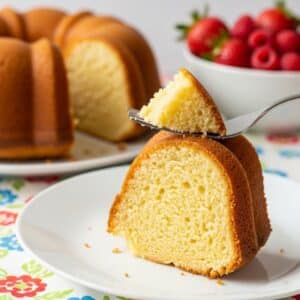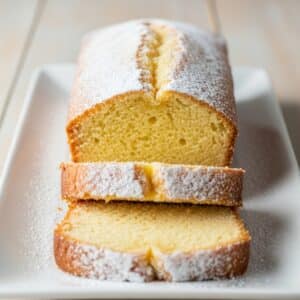A Lemon Chantilly Cake is a showstopper dessert that balances bright citrus flavor with a tender, moist crumb. Its layers are made with lemon zest, lemon juice, and olive oil for richness, then filled and frosted with a luscious cream cheese buttercream. Adding lemon curd between layers brings even more tang and depth. This cake feels both elegant and comforting, making it perfect for birthdays, spring gatherings, or any occasion where you want a centerpiece dessert.
With vibrant flavor, creamy frosting, and a soft texture, it delivers a delightful contrast in every bite. In this article, you’ll learn how to choose the right ingredients, prepare the batter, bake the sponge, make the frosting, and assemble the cake with confidence.
🧾 Want to keep this recipe for later? Download your printable PDF version now and enjoy it anytime!
📥 Download Recipe PDF✅ Print-friendly • 🕒 Save for later • 📱 Mobile-accessible
💡 Want more like this? Subscribe to our weekly printable recipes!
The Charm of Lemon Chantilly Cake
Why Lemon Is the Star
Lemon gives this cake its signature freshness and aroma. Zesting and rubbing zest into sugar unlocks essential oils, releasing bright citrus flavor. Lemon juice contributes acidity that balances sweetness, while curd optional layers intensify the citrus profile. Unlike heavy chocolate or caramel cakes, lemon feels light and refreshing, making it a crowd-pleaser for warm-weather celebrations. Its tartness cuts through the richness of butter and cream, offering balance.
What Makes Chantilly Style Unique
Chantilly traditionally refers to lightly sweetened, airy whipped cream, but in cakes it often signals lightness and elegance. Here, it reflects the cake’s tender crumb combined with creamy frosting. Olive oil adds subtle depth, while ricotta-like softness comes from milk and butter. Combined, these ingredients create a sponge that is moist but not dense, ideal for layering. The frosting adds smoothness, with optional lemon curd providing bursts of flavor. The result is a dessert that feels indulgent yet uplifting.
Print
Lemon Chantilly Cake Recipe
- Total Time: 1 hour
- Yield: 12 servings 1x
- Diet: Vegetarian
Description
A bright and moist Lemon Chantilly Cake with layers of citrus sponge, cream cheese buttercream, and optional lemon curd. Perfect for spring celebrations and gatherings.
Ingredients
For the Cake
3 cups cake flour (or all-purpose)
Zest of 2 lemons
1/3 cup lemon juice (fresh)
1 1/4 cups granulated cane sugar
2 1/2 tsp baking powder
1/4 tsp baking soda
1/2 tsp fine sea salt
8 tbsp unsalted butter, softened
1/2 cup olive oil
3 large eggs, room temperature
1 1/2 cups whole milk, room temperature
2 tsp vanilla extract
For the Frosting
1/2 cup unsalted butter, softened
8 oz cream cheese
4 cups powdered sugar
1 1/2 tsp vanilla extract
1/8 tsp fine salt
1 tbsp heavy whipping cream
Optional: lemon zest, juice, or food coloring
Optional: 1/2 cup lemon curd
Instructions
1. Preheat oven to 350°F. Grease and line two 8” pans.
2. Rub lemon zest into sugar until fragrant. Add softened butter, beat until creamy.
3. Switch to whisk, add eggs one by one, beating until doubled in volume.
4. Add lemon juice, olive oil, vanilla, and milk. Whisk until smooth.
5. Mix flour, baking powder, baking soda, and salt. Fold into wet mixture until just combined.
6. Divide batter between pans, smooth tops, and bake 25–30 minutes.
7. Cool in pans 10 minutes, then transfer to rack to cool completely.
8. Make frosting: beat butter and cream cheese until smooth.
9. Add powdered sugar gradually, then vanilla, salt, and cream. Beat until fluffy.
10. Optional: add zest and juice for lemon flavor.
11. Layer cakes with frosting and lemon curd. Frost top and sides.
12. Decorate with zest curls, lemon slices, or berries.
Notes
For milder flavor, replace half olive oil with butter.
Cool completely before frosting to avoid melting.
Cake layers can be baked ahead and refrigerated overnight.
Store leftovers in fridge up to 4 days. Freeze unfrosted sponge for longer storage.
- Prep Time: 30 minutes
- Cook Time: 30 minutes
- Category: Dessert
- Method: Baking
- Cuisine: Fusion
Nutrition
- Serving Size: 1 slice
- Calories: 390
- Sugar: 32g
- Sodium: 190mg
- Fat: 20g
- Saturated Fat: 11g
- Unsaturated Fat: 8g
- Trans Fat: 0g
- Carbohydrates: 46g
- Fiber: 1g
- Protein: 5g
- Cholesterol: 85mg
Choosing Ingredients for Success
Building the Cake Layers
Cake flour or all-purpose flour forms the base, keeping texture light. Lemon zest and juice add fragrance and tang, while butter and olive oil ensure richness. Eggs provide structure and volume, especially when whipped until pale. Cane sugar sweetens while also aerating the batter. Milk adds tenderness and moisture, ensuring the crumb doesn’t dry. Baking powder and soda give rise, balanced with salt to sharpen flavors. Each ingredient is essential for producing soft, lemony layers that slice neatly and taste bright.
Cream Cheese Frosting Essentials
For the frosting, softened butter and cream cheese form the base. Powdered sugar provides sweetness and stability, while vanilla extract rounds out flavor. A touch of salt balances richness, and heavy cream whips the frosting into a light, airy consistency. Optional lemon zest and juice in the frosting deepen citrus notes, tying everything together. For those who love citrus-forward desserts, you might also enjoy the Citrus Olive Oil Cake recipe, another refreshing option that highlights bright flavors. Using high-quality, fresh ingredients ensures the cake delivers on both flavor and texture.
Preparing the Batter
Mixing Wet Ingredients
Start by combining lemon zest with sugar, rubbing until the sugar resembles wet sand and smells fragrant. Add softened butter and beat until creamy. Switch to a whisk attachment, then add eggs one at a time, whisking until doubled in volume. Whisk in lemon juice, olive oil, and vanilla extract until pale and airy. Finally, add milk, blending until smooth. This careful mixing builds air into the batter, producing light cake layers that remain moist and flavorful.
Incorporating Dry Ingredients
Whisk together flour, baking powder, baking soda, and salt separately. Gently fold this mixture into the wet base until just combined. Overmixing develops gluten, which can make the cake dense. Divide batter between greased and lined cake pans, smoothing surfaces for even baking. The batter should be thick but pourable, carrying citrus fragrance. This stage determines the sponge’s lightness and structure, so precision matters. Once poured, the pans are ready for the oven.
Baking and Cooling the Layers
Achieving Perfect Texture
Bake at 350°F for 25–30 minutes, or until a toothpick inserted into the center comes out clean. Tops should appear lightly golden with edges pulling from the pan. Olive oil and butter ensure moist crumb, while eggs and leaveners provide structure. Avoid opening the oven door too early, as this can cause collapse. Timing is crucial—overbaking dries the sponge, underbaking leaves it gummy. When baked correctly, the layers are light, tender, and infused with lemon fragrance.
Cooling for Stability
Let the cakes cool in pans for 10 minutes before turning them onto racks. Cool completely before slicing or frosting. For a dramatic look, cut each layer in half to create four thinner layers. Chilling briefly before slicing makes this easier. Cooling stabilizes the crumb, preventing frosting from melting. If possible, bake layers a day ahead, wrap tightly, and refrigerate overnight. Resting deepens flavor and improves structure, making assembly smoother.
Making the Cream Cheese Buttercream
Creating a Fluffy Base
Beat softened butter and cream cheese until smooth. Add powdered sugar gradually, mixing on low to prevent clumps. Once absorbed, add vanilla, salt, and heavy cream. Whip on high until fluffy and light. The frosting should be creamy yet stable, holding its shape between layers. For a citrus boost, add lemon zest or juice. Food coloring can also give the frosting a sunny hue, enhancing presentation without altering flavor.
Adjusting for Flavor and Texture
Taste the frosting and adjust as needed. More powdered sugar thickens consistency, while extra cream softens it. Lemon juice can balance sweetness, while zest enhances fragrance. If frosting feels too loose, chill briefly before spreading. Properly whipped buttercream should glide easily over cake layers without tearing the sponge. Its tangy creaminess pairs beautifully with lemon sponge and optional curd, creating a refreshing yet indulgent bite.
Assembling the Cake
Layering with Frosting and Curd
Place one cooled cake layer on a stand. Spread cream cheese frosting evenly, then add 3–4 tablespoons of lemon curd for tangy contrast. Repeat with remaining layers, stacking carefully for stability. Frost sides and top, smoothing for a refined look or leaving rustic swirls. Lemon curd between layers enhances brightness, complementing the soft crumb. This combination creates a cake that tastes both rich and refreshing.
Decorating for Impact
Decorate with lemon slices, zest curls, or edible flowers for a polished finish. Fresh berries also pair beautifully with lemon, adding color and flavor. Allow the assembled cake to rest in the fridge for at least 20 minutes to set before serving. This helps flavors meld and makes slicing cleaner. Presentation elevates the cake, turning it from a homemade bake into a centerpiece worthy of special occasions.
Serving and Storage
How to Serve
Serve slices at room temperature for the best texture. Pair with tea, sparkling water, or dessert wines for a balanced finish. The light lemon profile makes it suitable for afternoon tea or after-dinner dessert. Its refreshing taste ensures it appeals to a wide audience. Each slice delivers moist sponge, creamy frosting, and bursts of citrus, making it irresistible.
Storing Leftovers
Store leftovers in an airtight container in the fridge for up to four days. For longer storage, freeze unfrosted layers for up to two months, wrapping tightly in plastic. Thaw overnight in the fridge before frosting. Frosted cakes can also be frozen briefly for cleaner slicing, though decorations like lemon slices should be added fresh. Proper storage preserves flavor and texture, ensuring the cake remains delicious even after the day it’s baked.
FAQs about Lemon Chantilly Cake
Can I make this cake ahead? Yes, bake the sponge a day before and assemble closer to serving for best results.
Can I replace olive oil? Yes, use all butter or half butter, half neutral oil for a milder flavor.
How do I make frosting more lemony? Add zest and juice directly into the buttercream.
Can I freeze this cake? Yes, freeze unfrosted layers for up to two months.
Do I need cake flour? Cake flour creates a lighter crumb, but all-purpose works fine.
Conclusion
Lemon Chantilly Cake is a dessert that captures citrus brightness in a moist, tender sponge, layered with cream cheese buttercream and optional lemon curd. Its balance of freshness and richness makes it perfect for gatherings or everyday indulgence. With simple steps and quality ingredients, you can create a cake that feels sophisticated and celebratory. Whether decorated simply with zest or elegantly with flowers, it’s a recipe that always impresses. By following these instructions, you’ll enjoy a cake that is as beautiful as it is delicious, a treat you’ll want to bake again and again.




